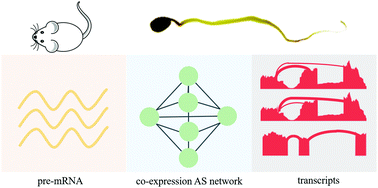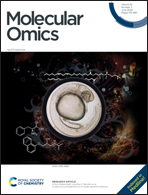Specific expression and alternative splicing of mouse genes during spermatogenesis†
Abstract
Considering the high abundance of spliced RNAs in testis compared to other tissues, it is needed to construct the landscape of alternative splicing during spermatogenesis. However, there is still a lack of the systematic analysis of alternative RNA splicing in spermatogenesis. Here, we constructed a landscape of alternative RNA splicing during mouse spermatogenesis based on integrated RNA-seq data sets. Our results presented several novel alternatively spliced genes (Eif2s3y, Erdr1 Uty and Zfy1) in the Y chromosome with a specific expression pattern. Remarkably, the alternative splicing genes were grouped into co-expression networks involved in the microtubule cytoskeleton organization and post-transcriptional regulation of the gene expression, indicating the potential pathway to germ cell generation. Furthermore, based on the co-expression networks, we identified Atxn2l as a potential key gene in spermatogenesis, which presented dynamic expression patterns in different alternative splicing types. Ultimately, we proposed splicing regulatory networks for understanding novel and innovative alternative splicing regulation mechanisms during spermatogenesis. In summary, our research provides a systematic analysis of alternative RNA splicing and some novel spliced genes related to spermatogenesis.



 Please wait while we load your content...
Please wait while we load your content...